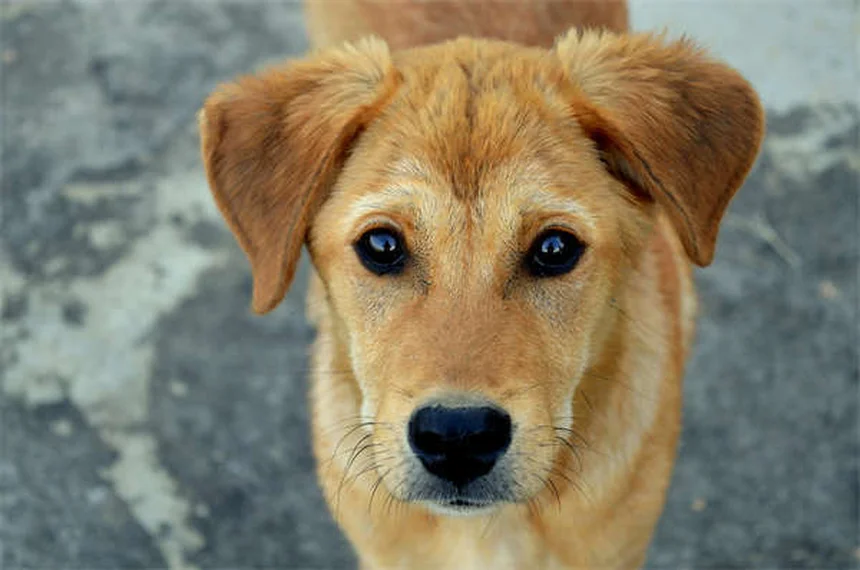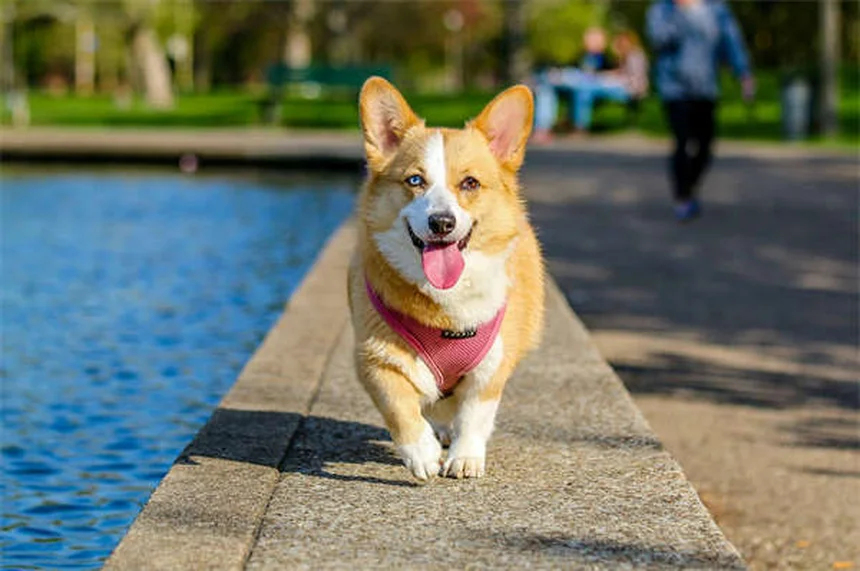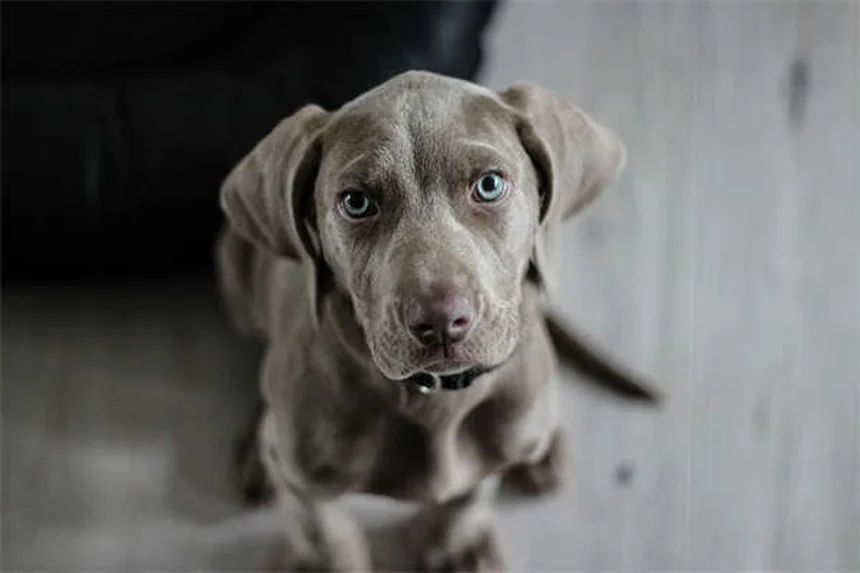Advertisement
Flying with your dog doesn't have to be stressful - for either of you! The secret? Preparation and understanding your pup's needs. As someone who's flown cross-country with anxious dogs more times than I can count, I can tell you firsthand that these strategies work.Here's the deal: Dogs pick up on our stress way more than we realize. That's why the first step is getting your own anxiety under control. I learned this the hard way when my nervous energy turned my usually chill Labrador into a trembling mess at 30,000 feet. But don't worry - we'll cover everything from pre-flight prep to in-flight hacks that'll have your furry co-pilot snoozing comfortably.Whether it's your first time flying with Fido or you're looking to improve your routine, these 7 proven methods will make air travel smoother for both of you. Let's get started!
E.g. :5 Essential Tips to Keep Your Dog Safe During Thunderstorms
- 1、Understanding Your Dog's Anxiety During Flights
- 2、Pre-Flight Prep: Setting Up for Success
- 3、Airport Survival Tactics
- 4、In-Flight Comfort Strategies
- 5、Post-Flight Recovery
- 6、Beyond the Basics: Advanced Tips for Frequent Fliers
- 7、The Emotional Side of Travel
- 8、When Flying Isn't the Answer
- 9、Creating Positive Travel Memories
- 10、FAQs
Understanding Your Dog's Anxiety During Flights
Why Do Dogs Get Nervous on Planes?
Ever noticed how your dog starts pacing when you pull out the suitcase? Dogs pick up on our emotions faster than you can say "treat time!" When we're stressed about flying, they sense it through our body language, tone, and even our sweat (yes, really!).
Harrison Forbes, that awesome dog trainer you see on TV, puts it perfectly: "We're so worried about Fido acting up that we accidentally turn into walking anxiety signals. Our nervous breathing, fidgeting - it's like we're screaming 'DANGER!' in dog language." Before you know it, you've got a furry bundle of nerves chewing the armrest.
The Science Behind Canine Stress
Let's break this down with some cool facts:
| Stress Signal | What Your Dog Thinks | How You Accidentally Make It Worse |
|---|---|---|
| Panting | "The air smells weird and my human's acting strange" | Checking on them every 2 minutes |
| Whining | "I don't understand what's happening" | Baby-talking in high-pitched "it's okay" voice |
| Trembling | "Everything is too loud and shaky" | Holding them too tight (sorry, guilty!) |
Here's the kicker - did you know the cabin pressure changes affect dogs more than us? Their ears pop just like ours, but they can't chew gum to fix it! That's why you'll see smart pet parents bringing special treats for takeoff and landing.
Pre-Flight Prep: Setting Up for Success
 Photos provided by pixabay
Photos provided by pixabay
Crate Training Like a Pro
If your dog's carrier currently lives in the garage except for vet visits, we've got work to do! Start at least 3 weeks before your trip by making the crate their favorite hangout spot. Toss in some high-value treats randomly throughout the day - make it a surprise party only they're invited to!
I trained my labrador Max by feeding all his meals in the crate with the door open at first. Within a week, he'd nap in there voluntarily. Pro tip: Use a shirt you've worn as bedding so your scent comforts them during the flight. Just maybe skip the gym clothes, okay?
The Vet Visit You Can't Skip
"But my dog seems fine!" I hear you say. Here's the thing - airlines require health certificates issued within 10 days of travel. More importantly, your vet can prescribe mild sedatives if needed and check for hidden issues that could make flying risky.
Dr. Sarah Wooten, a veterinary expert, shares: "We recently had a client whose 'healthy' dog actually had an ear infection we caught during the pre-flight exam. Flying with that could have been extremely painful." Better safe than sorry when you're 30,000 feet up!
Airport Survival Tactics
Timing Is Everything
Rushing through security with a squirmy pup? Worst. Idea. Ever. Arrive at least 3 hours early for domestic flights - trust me, you'll need every minute. Here's why:
1. Potty breaks (airport pet relief areas exist but can be hard to find)
2. Extra security screening for pets
3. Time to calm down after the chaos
4. Snack and water pit stops
Ever seen a dog refuse to walk on those weird floor scanners? Me too. That's why we budget extra time for the TSA dance - where you juggle leash, treats, and your shoes while trying not to drop anything.
 Photos provided by pixabay
Photos provided by pixabay
Crate Training Like a Pro
Here's a golden rule: Your dog must come out of the carrier during screening. Practice this at home first! Nothing's sadder than watching someone struggle to remove a terrified pup while the line grows impatient.
Pro move: Bring easy-slip-on shoes and a treat pouch clipped to your waist. That way you've got free hands to manage your dog. Bonus points if you teach them a solid "stay" command for when you need to gather your belongings post-screening.
In-Flight Comfort Strategies
Seat Selection Matters
Window or aisle? That depends on your dog's personality! Nervous pups often prefer the window's steady surface to lean against. But if you've got a social butterfly who wants to see everything, the aisle lets them observe the action.
Did you know some airlines block certain rows for pets? Always call ahead - I learned this the hard way when assigned to an exit row (no pets allowed) and had to scramble at the gate. Not the relaxing start to vacation we'd planned!
Keeping Cool at Cruising Altitude
Why do dogs pant more on planes? Between recycled air and stress, they dehydrate faster than you'd think. Offer small amounts of water every hour using a collapsible bowl. Skip the ice cubes though - the noise when they drop startles some dogs.
Here's a trick flight attendants love: Freeze a lick mat with peanut butter or yogurt before leaving home. By the time you're airborne, it's thawed enough to enjoy but still cold and soothing. Distraction + hydration = win!
Post-Flight Recovery
 Photos provided by pixabay
Photos provided by pixabay
Crate Training Like a Pro
Your dog might seem extra sleepy or slightly off after flying - totally normal! Just like us with jet lag, their little bodies need time to adjust. Keep walks short and calm, and don't be surprised if they drink more water than usual.
Watch for these red flags though: excessive drooling, vomiting, or disorientation lasting more than a day. That's when you'll want to call your vet. Otherwise, some extra cuddles and their favorite blanket should do the trick!
Making Future Flights Easier
Was this your first time flying with your dog? Take notes while everything's fresh! What worked? What caused stress? I keep a "dog travel diary" in my phone with notes like:
- Hates when beverage carts pass
- Loves chewing on empty plastic cups (weird but harmless)
- Does better with pre-flight exercise
- Prefers facing forward in carrier
Next time you fly, you'll be that calm, prepared pet parent others envy. And who knows - maybe your pup will start looking forward to vacations as much as you do!
Beyond the Basics: Advanced Tips for Frequent Fliers
When Your Dog Becomes a Jet-Setter
You know what they say - practice makes perfect! If you're planning multiple trips, consider doing mock airport runs on weekends. Load up the car with the crate, drive to a quiet parking lot near the airport, and simulate your pre-flight routine. The more familiar these rituals become, the less stressful actual travel day will feel.
I've got a client whose golden retriever now gets excited when he sees suitcases because it means adventure time! How'd we get there? By making every trip - even just to the local park - involve his travel gear. Now his tail wags when the carrier comes out. That's the power of positive association!
The Secret World of Pet-Friendly Airlines
Not all airlines treat furry passengers equally. Did you know some offer frequent flyer miles for pets? Here's a quick comparison of what different carriers bring to the table:
| Airline | Pet Perks | Unique Policies |
|---|---|---|
| JetBlue | Free pet travel kits | Allows pets in cabin on transatlantic flights |
| Alaska Airlines | Dedicated pet check-in line | Offers "Fur-st Class" service with premium carriers |
| Delta | Temperature-controlled pet areas | Special pet relief stations at hub airports |
Ever wondered why some airlines charge $95 while others ask $125 each way? It often comes down to the extra staff training they provide for handling pets. That higher fee might mean your flight attendant knows exactly how to calm a nervous pup during turbulence!
The Emotional Side of Travel
Reading Your Dog's Subtle Signals
While some dogs bark or whine when stressed, others go completely silent. That's when you need to become a detective. Watch for excessive yawning, lip licking, or avoiding eye contact - these are all signs your buddy isn't as comfortable as they seem.
My friend's border collie once stayed statue-still for a whole flight. We thought she was fine until we noticed her claws had dug tiny holes in the carrier floor! Now we bring chew toys to redirect that nervous energy. Remember: calm doesn't always mean comfortable in dog language.
Building Confidence Between Trips
Here's a fun game that helps between travels: the "surface exploration" challenge. Introduce your dog to different textures and unstable surfaces at home - think wobble boards, plastic sheets, even bubble wrap! This builds their adaptability so airport floors and airplane vibrations feel less intimidating.
I started with my puppy by scattering treats on a yoga mat, then gradually moved to noisier materials. Now he prances across grates and moving walkways like he owns the place! Bonus: This also helps prevent fear of vet exam tables and grooming salons.
When Flying Isn't the Answer
Alternative Transportation Options
Sometimes the kindest choice is not flying at all. For elderly dogs or those with health conditions, consider road trips or pet relocation services. These specialists handle everything from health certificates to climate-controlled transport - worth every penny for peace of mind!
Did you know Amtrak allows dogs under 20 pounds on many routes? Or that some cruise lines have kennel services? Exploring these options might reveal a less stressful adventure for your furry friend. After all, isn't the goal creating happy memories together?
Recognizing When to Stay Home
Here's the hard truth: some dogs will never enjoy air travel, and that's okay. If your pup shows signs of severe distress despite training and medication, consider trusted pet sitters instead. A vacation shouldn't leave emotional scars on either end of the leash!
How do you make this call? Track their recovery time after practice sessions. If it takes days for their appetite and energy to return, that's your answer. Their comfort matters more than our desire for Instagram-worthy travel pics with our pets.
Creating Positive Travel Memories
The Power of Post-Trip Rewards
Always end travel days with something fabulous! Whether it's a special dinner, extra playtime, or just marathon cuddles, this helps build positive associations. I keep "airport toys" that only appear after flights - makes them feel like returning heroes!
One client brings a frozen Kong to the airport pickup area. By the time they're in the car, it's thawed enough for her lab to enjoy. Now the dog practically drags her to baggage claim, knowing his reward awaits. Smart, right?
Documenting Your Journey Together
Start a travel scrapbook for your pup! Include photos, boarding passes, and notes about their reactions. Years later, you'll love seeing how far you've both come. My favorite page shows my terrified puppy's first flight compared to him snoozing comfortably on our tenth trip - progress you can see!
These memories become especially precious as dogs age. That scrapbook isn't just about travel - it's a celebration of your bond and all the adventures you've shared. Now if you'll excuse me, I need to go hug my dog and plan our next trip!
E.g. :7 Ways to Comfort Your Dog While Flying | PetMD
FAQs
Q: How early should I start preparing my dog for air travel?
A: Start at least 3 weeks before your flight if possible. This gives you time to crate train, get vet clearance, and do practice runs. I made the mistake of waiting until the last minute once - never again! Begin by making the carrier a happy place with treats and familiar bedding. Take short car rides to simulate motion, then work up to visiting the airport (without flying) to acclimate your pup to the sounds and smells. Trust me, this upfront investment pays off in a calmer travel experience.
Q: What's the best way to keep my dog hydrated during flights?
A: Small, frequent water breaks are key! I use a collapsible silicone bowl and offer a few licks every hour. Here's my pro tip: Freeze a lick mat with low-sodium chicken broth or peanut butter the night before. By flight time, it's thawed enough to enjoy but still cold and soothing. Avoid letting them gulp large amounts at once - the recycled cabin air plus motion can upset their stomach. And skip ice cubes - the clinking noise startles some dogs!
Q: Should I sedate my dog for air travel?
A: Only if your vet recommends it. Many airlines actually prohibit sedation because it can affect breathing at high altitudes. Instead, I've had great success with natural calming aids like Adaptil sprays and ThunderShirts. My vet once explained that sedatives can sometimes make dogs more anxious when they feel "off" but don't understand why. Always consult your veterinarian - they know your dog's health history best!
Q: How can I help my dog with ear pressure during takeoff/landing?
A: Dogs experience ear popping just like we do! Chewing helps equalize pressure, so time special treats for these critical moments. I use long-lasting chews like bully sticks or frozen Kongs. One flight attendant told me she swears by having owners gently massage their dog's ears during descent. Just watch for excessive head shaking or pawing at ears - that could signal discomfort needing vet attention.
Q: What's the most common mistake people make when flying with dogs?
A: Hands down, it's projecting our own stress onto them. We forget how attuned dogs are to our emotions! My breakthrough came when I started pretending everything was normal (even when I felt nervous). Now I do calming exercises before flights and maintain relaxed body language. Another big mistake? Not practicing security screening - you'd be surprised how many people don't realize they'll need to remove their dog from the carrier at checkpoints!







